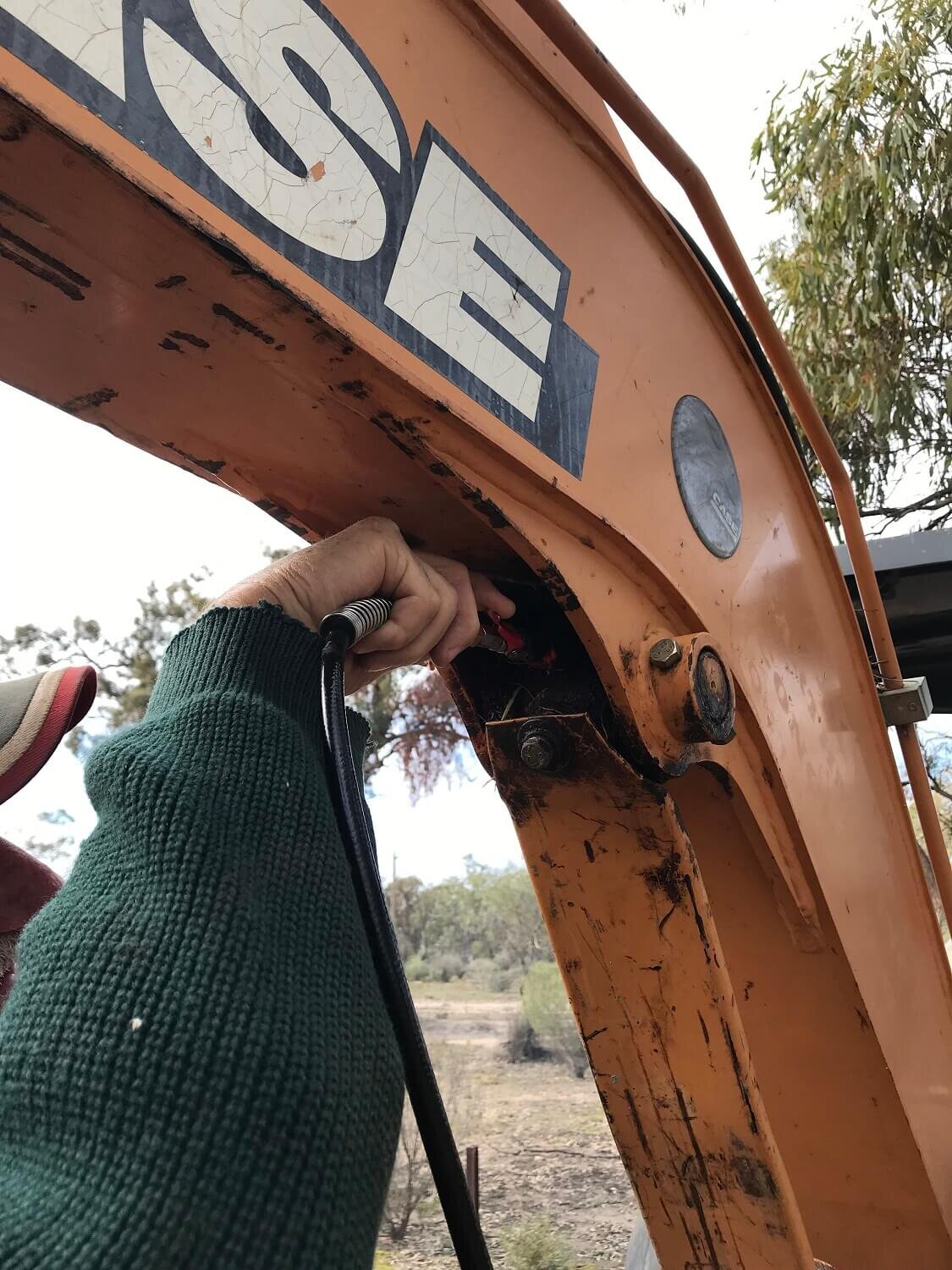Casey the excavator vs. Spiny Rush
Greasing nipples
Stuff I didn't learn at university ... Did you know excavators have grease nipples?
This is Casey, our 4.5-tonne excavator. She has 22 nipples scattered across her body. Phil regularly has to crawl around squirting grease into the nipples with a grease gun. The orange lubricating grease keeps all the bearings moving freely. Who knew? (Phil did apparently).
Casey often accompanies us on bush rambles and is used for precision weeding, ripping rabbit warrens with minimal disturbance, and fencing works.
Precision weeding with an excavator?
You might have thought I was kidding with "precision weeding" using a 4.5 tonne excavator ...
This is a weed called Spiny Rush. It has a very dense and persistent root system and can't be removed with hand tools. Phil has welded some plates onto the grab of the excavator so he can pluck out the plants and shake the soil off the roots. This way the Spiny Rush doesn't grow back and we can revegetate the area. These are pretty small plants but the technique works with larger tussocks as well.
Spiny Rush is a nasty weed that can take out an eye:
Spiny Rush is a perennial weed that can form impenetrable thickets. It needs damp sites to establish, but mature plants can grow in dry soils. It is not palatable to grazers, and is very hard to control. It is a cosmopolitan species with a native range including the Mediterranean region, western Europe, western North America, South America, Asia and southern Africa. I have no idea why or how it was introduced to Australia but it has been here since the early 1900s. The sharply pointed stems and leaves distinguish Spiny Rush from some similar-looking native rushes and sedges. Be careful … the “spiny” part can take out an eye!
How do you control Spiny Rush?
In the early days, we tried slashing it, or burning it, or pushing it up into heaps but each time the tussocks regrew. Our worst effort was ploughing it; this broke up the root mass and we had a thicker infestation of smaller plants. Phil’s technique of plucking out the Spiny Rush plants with an excavator is a breakthrough, although we still need to monitor the sites for a couple of years to check for Spiny Rush seedlings.
Spiny Rush (Juncus acutus)
Spiny rush is a sign of poor irrigation practices
The Spiny Rush on our property is a legacy of the bad old days. Drainage from over-irrigation of the adjoining horticultural properties accumulated to form an underground perched water table. This is basically a mound of salty groundwater sitting on top of an impermeable clay layer. The rising groundwater levels reached the surface at low points on the landscape making the land salty and swampy. In addition, up until the mid-1990s (before we owned the property), salty irrigation drainage water was also disposed of directly into parts of our creek line. These practices formed ideal conditions for Spiny Rush to establish.
Improved irrigation practices and the installation of a coordinated drainage scheme means our low-lying areas are no longer swampy. But we have two patches of Spiny Rush remaining. We are working to restore these areas.
More information:
Weeds Australia profile: Spiny Rush
The 2012 Mallee Salinity Workshop tells you everything you could ever want to know about irrigation, hydrogeology, soils and irrigated horticulture in the Mallee.







